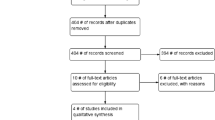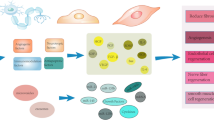Abstract
Objective
The aim of this study was to evaluate the effects of both testosterone depletion and supraphysiological testosterone supplementation in the early phase of an animal cutaneous wound healing model in comparison with the physiological hormonal condition.
Material and Methods
Forty rats were distributed into the following four groups: Control, Orchiectomy (OCX), Durateston (Dura) and OCX+Dura. On day 1, the testicles were removed (OCX group) and the rats (Dura group) received a supraphysiological dose (250 mg/kg) of exogenous testosterone weekly. After 15 days a full-thickness excisional skin wound was created in all animals, which was healed by the second intention for 7 days. On day 22, the rats were euthanatized and the wounds were harvested for histopathological evaluation, immunohistochemistry analyses and multiplex immunoassay. One-way ANOVA and post-hoc Tukey tests were performed.
Results
It was found that the supraphysiological testosterone level increased extracellular matrix deposition, promoted higher blood vessel formation and reduced wound contraction (p < 0.05). Additionally, it also stimulated PCNA-positive fibroblasts and KGF-positive cells (p < 0.05), while orchiectomy reduced the expression of IL-6 and TNF-α and increased VEGF and PDGF (p < 0.05) .
Conclusion
In conclusion, the results provide evidence that supraphysiological testosterone supplementation plays a positive role in the early phase of cutaneous wound healing, thus improving granulation tissue maturation through the enhancement of angiogenesis.







Similar content being viewed by others
References
Han G, Ceilley R. Chronic wound healing: a review of current management and treatments. Adv Ther. 2017;34(3):599–610.
Ustuner O, Anlas C, Bakirel T, Ustun-Alkan F, Sigirci BD, Ak S, Akpulat HA, Donmez C, Koca-Caliskan U. In Vitro evaluation of antioxidant, anti-inflammatory, antimicrobial and wound healing potential of Thymus Sipyleus Boiss. Subsp. Rosulans (Borbas) Jalas. Molecules. 2019;24(18):3353.
Reinke JM, Sorg H. Wound repair and regeneration. Eur Surg Res. 2012;49(1):35–43.
Eming SA, Martin P, Tomic-Canic M. Wound repair and regeneration: mechanisms, signaling, and translation. Sci Transl Med. 2014;6(265):265sr6.
Zhang C, Lim J, Liu J, Ponugoti B, Alsadun S, Tian C, et al. FOXO1 expression in keratinocytes promotes connective tissue healing. Sci Rep. 2017;7:42834.
Romana-Souza B, Assis de Brito TL, Pereira GR, Monte-Alto-Costa A. Gonadal hormones differently modulate cutaneous wound healing of chronically stressed mice. Brain Behav Immun. 2014;36:101–10.
Guo S, Dipietro LA. Factors affecting wound healing. J Dent Res. 2010;89(3):219–29.
Kanji S, Das H. Advances of stem cell therapeutics in cutaneous wound healing and regeneration. Mediators Inflamm. 2017;2017:5217967.
Hardman MJ, Ashcroft GS. Estrogen, not intrinsic aging, is the major regulator of delayed human wound healing in the elderly. Genome Biol. 2008;9:R80.
Chenu C, Adlanmerini M, Boudou F, Chantalat E, Guihot AL, Toutain C, et al. Testosterone prevents cutaneous ischemia and necrosis in males through complementaryestrogenic and androgenic actions. Arterioscler Thromb Vasc Biol. 2017;37(5):909–19.
Gilliver SC, Wu F, Ashcroft GS. Regulatory roles of androgens in cutaneous wound healing. Thromb Haemost. 2003;90(6):978–85.
Ashcroft GS, Mills SJ. Androgen receptor-mediated inhibition of cutaneous wound healing. J Clin Invest. 2002;110(5):615–24.
Fimmel S, Zouboulis CC. Influence of physiological androgen levels on wound healing and immune status in men. Aging Male. 2005;8(3–4):166–74.
Gilliver SC, Ashworth JJ, Mills SJ, Hardman MJ, Ashcroft GS. Androgens modulate the inflammatory response during acute wound healing. J Cell Sci. 2006;119(Pt 4):722–32.
Gilliver SC, Ashworth JJ, Ashcroft GS. The hormonal regulation of cutaneous wound healing. Clin Dermatol. 2007;25(1):56–62.
Soybir OC, Gürdal SÖ, Oran EŞ, Tülübaş F, Yüksel M, Akyıldız Aİ, Bilir A, Soybir GR. Delayed cutaneous wound healing in aged rats compared to younger ones. Int Wound J. 2012;9(5):478–87.
Gonçalves RV, Novaes RD, Sarandy MM, Damasceno EM, da Matta SL, de Gouveia NM, et al. 5α-Dihydrotestosterone enhances wound healing in diabetic rats. Life Sci. 2016;152:67–75.
Petroianu A, Veloso DFM, Alberti LR, Figueiredo JA, Carmo Rodrigues FHO, Carvalho E, Carneiro BGM. Hypoandrogenism related to early skin wound healing resistance in rats. Andrologia. 2010;42(2):117–20.
Gilliver SC, Ruckshanthi JP, Hardman MJ, Zeef LA, Ashcroft GS. 5alphadihydrotestosterone (DHT) retards wound closure by inhibiting reepithelialization. J Pathol. 2009;217:73–82.
Steffens JP, Coimbra LS, Ramalho-Lucas PD, Rossa C Jr, Spolidorio LC. The effect of supra and subphysiologic testosterone levels on ligature-induced bone loss in rats — a radiographic and histologic pilot study. J Periodontol. 2012;83(11):1432–9.
de Paiva GV, Ortega AAC, Steffens JP, Spolidorio DMP, Rossa C, Spolidorio LC. Long-term testosterone depletion attenuates inflammatory bone resorption in the ligature-induced periodontal disease model. J Periodontol. 2018;89(4):466–75.
Sen CK. Human wounds and its burden: an updated compendium of estimates. Adv Wound Care. 2019;8:39–48.
Steffens JP, Herrera BS, Coimbra LS, Stephens DN, Rossa C Jr, Spolidorio LC, et al. Testosterone regulates bone response to inflammation. Horm Metab Res. 2014;46(3):193–200.
Steffens JP, Coimbra LS, Rossa C Jr, Kantarci A, Van Dyke TE, Spolidorio LC. Androgen receptors and experimental bone loss - an in vivo and in vitro study. Bone. 2015;81:683–90.
Zhang C, Ponugoti B, Tian C, Xu F, Tarapore R, Batres A, et al. FOXO1 differentially regulates both normal and diabetic wound healing. J Cell Biol. 2015;209(2):289–303.
Vandenput L, Ohlsson C. Sex steroid metabolism in the regulation of bone health in men. J Steroid Biochem Mol Biol. 2010;121(3–5):582–8.
Lakshman KM, Kaplan B, Travison TG, Basaria S, Knapp PE, Singh AB, LaValley MP, Mazer NA, Bhasin S. The effects of injected testosterone dose and age on the conversion of testosterone to estradiol and dihydrotestosterone in young and older men. J Clin Endocrinol Metab. 2010;95(8):3955–64.
Maggio M, Basaria S, Ble A, Lauretani F, Bandinelli S, Ceda GP, et al. Correlation between testosterone and the infl ammatory marker soluble interleukin-6 receptor in older men. J Clin Endocrinol Metab. 2006;91(1):345–7.
Malkin CJ, Pugh PJ, Jones RD, Kapoor D, Channer KS, Jones TH. The effect of testosterone replacement on endogenous inflammatory cytokines and lipid profiles in hypogonadal men. J Clin Endocrinol Metab. 2004;89(7):3313–8.
Chodari L, Mohammadi M, Mohaddes G, Alipour MR, Ghorbanzade V, Dariushnejad H, et al. Testosterone and voluntary exercise, alone or together increase cardiac activation of AKT and ERK1/2 in diabetic rats. Arq Bras Cardiol. 2016;107(6):532–41.
Chodari L, Mohammadi M, Ghorbanzadeh V, Dariushnejad H, Mohaddes G. Testosterone and voluntary exercise promote angiogenesis in hearts of rats with diabetes by enhancing expression of VEGF-A and SDF-1a. Can J Diabetes. 2016;40(5):436–41.
Eckes B, Nischt R, Krieg T. Cell-matrix interactions in dermal repair and scarring. Fibrogenesis Tissue Repair. 2010;3:4.
Barker TH. The role of ECM proteins and protein fragments in guiding cell behavior in regenerative medicine. Biomaterials. 2011;32:4211–4.
Werner S, Grose R. Regulation of wound healing by growth factors and cytokines. Physiol Rev. 2003;83(3):835–70.
Montico F, Hetzl AC, Cândido EM, Cagnon VH. Angiogenic and tissue remodeling factors in the prostate of elderly rats submitted to hormonal replacement. Anat Rec (Hoboken). 2013;296(11):1758–67.
Hofer MD, Cheng EY, Bury MI, Xu W, Hong SJ, Kaplan WE, et al. Androgen supplementation in rats increases the inflammatory response and prolongs urethral healing. Urology. 2015;85(3):691–7.
Werner S, Krieg T, Smola H. Keratinocyte-fibroblast interactions in wound healing. J Invest Dermatol. 2007;127(5):998–1008.
Marti G, Ferguson M, Wang J, Byrnes C, Dieb R, Qaiser R, Bonde P, Duncan MD, Harmon JW. Electroporative transfection with KGF-1 DNA improves wound healing in a diabetic mouse model. Gene Ther. 2004;11(24):1780–5.
Gilliver SC, Ruckshanthi JP, Hardman MJ, Nakayama T, Ashcroft GS. Sex dimorphism in wound healing: the roles of sex steroids and macrophage migration inhibitory factor. Endocrinology. 2008;149:5747–57.
Kanda N, Watanabe S. 17beta-estradiol stimulates the growth of human keratinocytes by inducing cyclin D2 expression. J Invest Dermatol. 2004;123:319–28.
Peng Y, Wu S, Tang Q, Li S, Peng C. KGF-1 accelerates wound contraction through the TGF-beta1/Smad signaling pathway in a double-paracrine manner. J Biol Chem. 2019;294(21):8361–70.
Peng C, Chen B, Kao HK, Murphy G, Orgill DP, Guo L. Lack of FGF-7 further delays cutaneous wound healing in diabetic mice. Plast Reconstr Surg. 2011;128(6):673e–84e.
Funding
This work was supported by São Paulo State Research Support Foundation (FAPESP) – Number 2015/20281–0.
Author information
Authors and Affiliations
Corresponding author
Ethics declarations
Conflicts of interest
The authors have no conflicts of interest to declare that are relevant to the content of this article.
Ethical Approval
All animal procedures were conducted in compliance with Brazilian National Council for the Control of Animal Experimentation with ethical standards that fully comply with Animal Research: Reporting of In Vivo Experiments (ARRIVE) guidelines. The experimental protocol was approved by the Local Ethics Committee on the Use of Animals (Process CEUA/FOAr #47/2014).
Additional information
Responsible Editor: John Di Battista.
Publisher's Note
Springer Nature remains neutral with regard to jurisdictional claims in published maps and institutional affiliations.
Rights and permissions
About this article
Cite this article
de Paiva Gonçalves, V., Steffens, J.P., Junior, C.R. et al. Supraphysiological testosterone supplementation improves granulation tissue maturation through angiogenesis in the early phase of a cutaneous wound healing model in rats. Inflamm. Res. 71, 473–483 (2022). https://doi.org/10.1007/s00011-022-01553-7
Received:
Revised:
Accepted:
Published:
Issue Date:
DOI: https://doi.org/10.1007/s00011-022-01553-7




